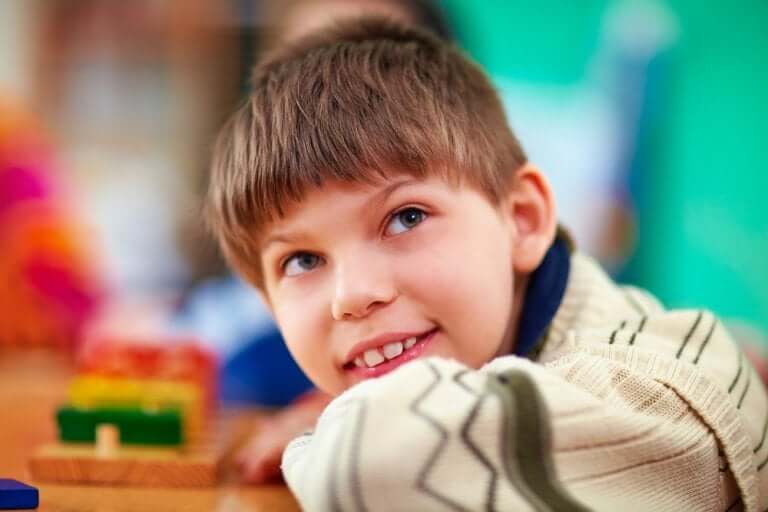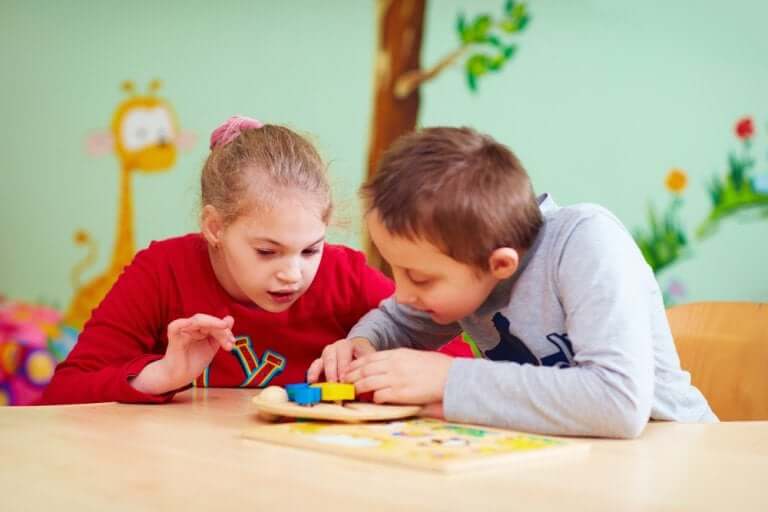Schooling for Children with Special Needs


Written and verified by the psychologist Ana Couñago
Schooling for children with special needs depends on the child’s characteristics and the parents’ decision. The choice of education for this type of student is quite varied, and there are many different options.
In an ideal world, all children would be able to go to a standard school. However, sometimes the individual situation of some students requires a different type of schooling than the usual one.
“Equal opportunities for all children is a right that must be defended, and not a privilege.”
– Anonymous –
Schooling for children with special needs
Children with special needs are children who have some type of disability, disorder, or learning disability. Because of this, they require specific support and attention within the education system. This depends on the individual country, but, generally, these students can access three types of schooling options:
- Ordinary Centers
- Hospital classrooms
- Special Education Centers

The parents are the ones responsible for choosing which option to enroll their child in. To do this, they should talk with education professionals about the specific case of their child, and then analyze the different options available.
“If a child can’t learn the way we teach them, maybe we should teach them the way they learn.”
– Ignacio Estrada –
The schooling of children with special needs in ordinary schools
Schooling in ordinary schools is, therefore, the most inclusive educational option. In this way, the child with special needs will have the option of learning and also developing his or her skills with students who don’t have any difficulties.
The child will, therefore, receive a fair education, adapted to his or her own needs. This will also be a very beneficial experience for the other children in the class.
So, in ordinary schools, we should bear in mind that this type of student can receive teaching in two ways:
- The ordinary classroom. Children with special needs will attend classes with the rest of their classmates and also receive specific and relevant attention in the classroom. Or, alternatively, they’ll go to a separate support classroom.
- The specific classroom. This is a classroom where a few children can go to receive individualized and personalized attention, which will, therefore, fit in with their age and abilities. These types of students with special needs need a curriculum that is significantly different from other students, and adapted specifically to them.
“Inclusive, good-quality education is a foundation for dynamic and equitable societies.”
– Desmond Tutu –
Schooling in hospital classrooms
Students with special needs can also go to school in hospital classrooms. Certain hospitals can provide educational support classrooms with educational and therapeutic support services to children who suffer from:
- A chronic or long-term illness
- Serious mental and psychiatric disorders
Due to their individual circumstances, they can’t regularly attend an ordinary school. This option, therefore, is intended to prevent the marginalization of students with these characteristics in the compulsory school stage.

Schooling in special education centers
Another schooling option for these students is to attend a special education center. This is only recommended in exceptional cases, as they’re intended for students who have a significant physical or sensory disability.
In fact, the enrolment of a student in these cases is only carried out after psycho-pedagogical tests and an evaluation of the child’s educational needs. This schooling situation is periodically reviewed by professionals with the aim of ensuring the child’s entry into a more normalized environment.
Consequently, these are schools that provide an adapted schooling according to:
- The educational needs of the student
- The specialized teachers available at the school
- The technical resources and the methodologies used
In this option, school education is offered with significant adaptations and with a more individualized work plan than in normal schools.
Schooling for children with special needs depends on the child’s characteristics and the parents’ decision. The choice of education for this type of student is quite varied, and there are many different options.
In an ideal world, all children would be able to go to a standard school. However, sometimes the individual situation of some students requires a different type of schooling than the usual one.
“Equal opportunities for all children is a right that must be defended, and not a privilege.”
– Anonymous –
Schooling for children with special needs
Children with special needs are children who have some type of disability, disorder, or learning disability. Because of this, they require specific support and attention within the education system. This depends on the individual country, but, generally, these students can access three types of schooling options:
- Ordinary Centers
- Hospital classrooms
- Special Education Centers

The parents are the ones responsible for choosing which option to enroll their child in. To do this, they should talk with education professionals about the specific case of their child, and then analyze the different options available.
“If a child can’t learn the way we teach them, maybe we should teach them the way they learn.”
– Ignacio Estrada –
The schooling of children with special needs in ordinary schools
Schooling in ordinary schools is, therefore, the most inclusive educational option. In this way, the child with special needs will have the option of learning and also developing his or her skills with students who don’t have any difficulties.
The child will, therefore, receive a fair education, adapted to his or her own needs. This will also be a very beneficial experience for the other children in the class.
So, in ordinary schools, we should bear in mind that this type of student can receive teaching in two ways:
- The ordinary classroom. Children with special needs will attend classes with the rest of their classmates and also receive specific and relevant attention in the classroom. Or, alternatively, they’ll go to a separate support classroom.
- The specific classroom. This is a classroom where a few children can go to receive individualized and personalized attention, which will, therefore, fit in with their age and abilities. These types of students with special needs need a curriculum that is significantly different from other students, and adapted specifically to them.
“Inclusive, good-quality education is a foundation for dynamic and equitable societies.”
– Desmond Tutu –
Schooling in hospital classrooms
Students with special needs can also go to school in hospital classrooms. Certain hospitals can provide educational support classrooms with educational and therapeutic support services to children who suffer from:
- A chronic or long-term illness
- Serious mental and psychiatric disorders
Due to their individual circumstances, they can’t regularly attend an ordinary school. This option, therefore, is intended to prevent the marginalization of students with these characteristics in the compulsory school stage.

Schooling in special education centers
Another schooling option for these students is to attend a special education center. This is only recommended in exceptional cases, as they’re intended for students who have a significant physical or sensory disability.
In fact, the enrolment of a student in these cases is only carried out after psycho-pedagogical tests and an evaluation of the child’s educational needs. This schooling situation is periodically reviewed by professionals with the aim of ensuring the child’s entry into a more normalized environment.
Consequently, these are schools that provide an adapted schooling according to:
- The educational needs of the student
- The specialized teachers available at the school
- The technical resources and the methodologies used
In this option, school education is offered with significant adaptations and with a more individualized work plan than in normal schools.
All cited sources were thoroughly reviewed by our team to ensure their quality, reliability, currency, and validity. The bibliography of this article was considered reliable and of academic or scientific accuracy.
- Decreto 118/1998, de 23 de junio, de ordenación de la respuesta educativa al alumnado con necesidades educativas especiales, en el marco de una escuela comprensiva e integradora. Boletín Oficial del País Vasco. País Vasco, 13 de julio de 1998, núm. 130, pp. 12956-12970.
- Observatorio Estatal de la Discapacidad. (2018). Alumnado con discapacidad y educación inclusiva en España. Fase 1: La Educación Inclusiva en España. Marco normativo y políticas públicas. Recuperado de: https://www.observatoriodeladiscapacidad.info/wp-content/uploads/2019/04/OED-ALUMNADO-CON-DISCAPACIDAD-FASE-I.pdf
This text is provided for informational purposes only and does not replace consultation with a professional. If in doubt, consult your specialist.








